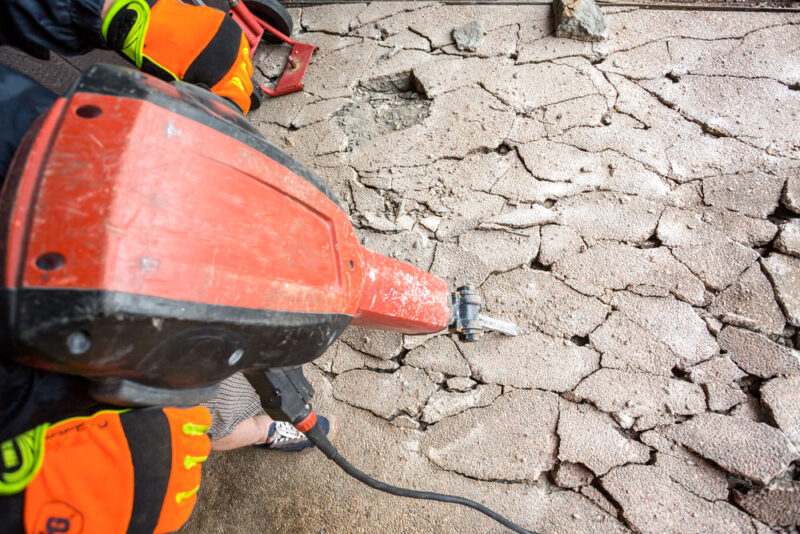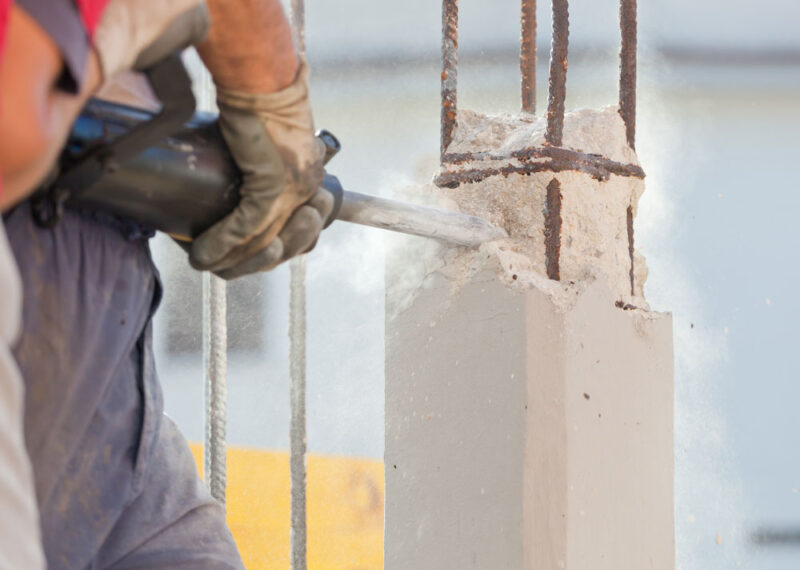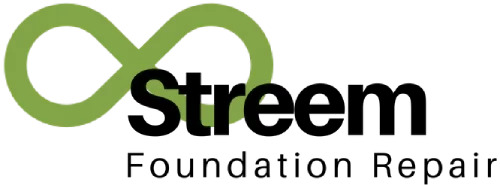Concrete structures may require some maintenance work (such as patching or resurfacing) to fix small cracks or erosion issues. But when the surface has gotten too damaged, these short-term fixes won’t make any difference because the surface will quickly show the same characteristics of the concrete underneath. If your slab has deep cracks, shows signs of settling, or is flaking away large pieces, it may be time to get rid of it. Sometimes concrete slabs can be repaired, but if this is not possible, demolition may be the best option.
Concrete demolition is a necessary part of the abatement process for condemned or abandoned properties because once the decision has been made to tear it down, the slab must be removed so the site can be clear for new construction. Slab removal is a complicated and dangerous process, which is why you need to hire a professional.

Signs That a Concrete Slab Needs Replacement
Here are some of the conditions where a concrete slab replacement is recommended:
- Sunken Concrete Slabs — Concrete slabs may sink if the subgrade wasn’t prepared properly. Loose dirt may have been used, and it can settle because water is leaking under the concrete. This will cause the concrete slab to not have enough support, which will make it more prone to sinking. Another possibility is that the subgrade was properly compacted, but the slab was overloaded (which caused it to sink).
- Deep Cracks — Concrete slabs could develop deep and widespread cracks in areas where settlement has occurred. This can be caused by heavy loads (such as trucks, improper subgrades, or erosion).
- Severe Damage to Concrete Surfaces — If a concrete surface has too much spalling or pitting, it’s more economical to replace the entire slab than to repair the surface.
- Construction Additions — When a structure needs to be retrofitted or modified, any concrete elements that interfere with the project need to be removed.
- New Construction — Some structures are demolished when a new building with a completely different purpose or architectural design is going to be constructed.
- Faulty Concrete — If a piece of concrete has a problem that affects the quality of the project, it must be removed and repoured.
If you’re in a situation where a concrete slab needs to be removed, it’s always best to hire a professional.

Common Methods for Concrete Demolition
Here are some of the common methods for concrete demolition:
- Pressure Bursting — This is the best method if the removal process must be dust-free, controlled, and relatively quiet. Pressure bursting can be either mechanical or chemical. But in both cases, holes are drilled into the concrete so lateral forces can be applied. The concrete is split by inserting an expansive slurry. Once the concrete has been split, it can be removed by hand or with a crane.
- Pneumatic and Hydraulic Breakers — This method is often used in concrete demolition projects that involve foundations, pavements, and bridge decks. The complexity of this method will depend on the strength of the concrete, the amount of the reinforcing steel, the hammer size, and the working conditions.
- Ball and Crane Method — This is one of the oldest and most common methods for concrete demolition, and it involves the use of a wrecking ball that can be dropped or swung into the structure. This operation should only be performed by a highly-skilled professional. While it can easily break down concrete, some extra work may be required to cut the steel reinforcements. It will also produce a great deal of dust, noise, and vibration.
- Dismantling — Concrete elements can be cut with a saw, a thermal lance (in the presence of reinforcing steel), or high-speed water jets. They can then be removed with a crane, which will allow the concrete demolition to take place with a minimal amount of noise and dust. It will also minimize the impact it will have on the surrounding area. This is an ideal method when portions of a building (such as slabs and walls) need to be removed.
- Explosives — This method can be used to remove large portions of concrete. The explosives can be inserted and detonated inside a series of predefined boreholes, which will cause the structure to break up into smaller pieces. This method is both versatile and flexible, but the resulting blast and vibration can damage the surrounding structure (especially if it isn’t controlled). That’s why this concrete demolition method has the strictest safety regulations.
Concrete Demolition FAQ
Concrete demolition is an important part of many different construction and renovation projects. Whether you need to remove unwanted concrete structures or want to prepare a site for a new construction project, it’s important to understand the process. Demolishing concrete can be a daunting task. But if you do the right preparation, use the right tools, and implement the proper safety measures, you’ll be able to manage it more effectively.
Here are some common questions people ask about concrete demolition.
The term “concrete demolition” refers to the process of dismantling or destroying concrete structures (such as foundations and sidewalks). It often requires the use of heavy machinery and skilled labor to make sure it’s performed safely and effectively.
It’s important to hire a concrete demolition company for the following reasons:
Expertise — A professional will have the knowledge and expertise to take care of complex demolition tasks.
Safety — Demolishing concrete can be dangerous, but a professional can follow certain safety procedures to minimize risk.
Compliance — A licensed contractor will be able to make sure the demolition meets local codes and regulations.
Be sure to speak to a professional for more information about the process of demolishing concrete.
It can be hard to find the right company for concrete demolition services, but here are some important things to consider:
Licensing — You want to make sure the company you hire is licensed and insured.
Experience — You should fund a contractor with a proven track record in concrete demolition.
Equipment — Ask each contractor you’re considering about the machinery and tools they use for concrete demolition.
You also want to get quotes from many different contractors, so you can compare pricing and services.
The concrete demolition process usually involves the following steps:
Site Assessment — The demolition site is evaluated while the project is planned.
Planning and Permitting — The necessary permits are secured while a comprehensive demolition plan is developed.
Preparation — Safety barriers are set up so the area is secure.
Demolition — Heavy machinery (such as jackhammers and excavators) is used to break down the concrete.
Debris Removal — The wreckage is cleared while the site is prepared for construction.
Be sure to speak to a professional for more information.
Here are some of the things you should avoid when you’re hiring someone for concrete demolition:
Not Checking References — You should always ask for references and examples of past projects.
Not Checking Licenses — You want to make sure the contractor has the proper licensing and insurance.
You also want to be wary of unusually low bids, because they might indicate poor workmanship and other hidden costs.
Hiring a local contractor for concrete demolition can have a number of advantages. Some of them include the following:
Familiarity with Local Regulations — Local contractors will be familiar with regional laws and requirements.
Faster Response Times — Their proximity will allow them to provide faster service and scheduling.
Local contractors will also have an established relationship and a good reputation within the community.
There may be a number of reasons why people use concrete demolition services, but one of the most common is because the surface has deteriorated over time (which can often lead to cracks, uneven surfaces, and potential safety hazards). You may also need to remove concrete to accommodate for a new landscape design, expansion, or some other structural modification.
Sometimes, concrete structures are in the way when plumbing or electrical repairs are needed. But regardless of what your reasons may be, it’s important to take a proactive approach to demolition and removal. It can help to preserve or even improve your property’s aesthetic appeal, which may increase its value.
There are a number of tools that can be used to make the concrete demolition process easier and safer. Jackhammers are powerful tools that are great for breaking up large areas, but they require a great deal of strength and caution to operate safely. For more precise work, a chisel and sledgehammer can be used. But it’s slower and requires more control over the process.
If you’re looking for one of the best places for the demolition of concrete in Corpus Christi, be sure to get in touch with Streem Foundation Repair.
